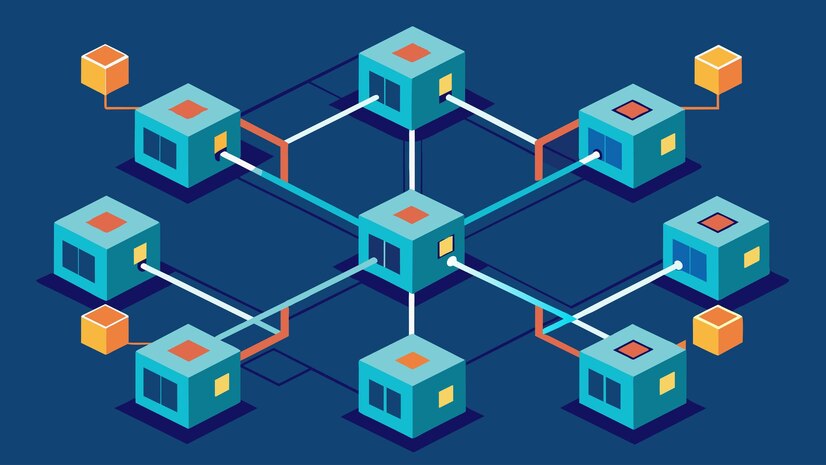The pharmaceutical sector is not left behind in an era characterized by technological progress. The development of packaging and labelling technologies is among the most important developments in this industry. Pharmaceutical product packaging, tracking, and end-user communication are all undergoing radical change because of smart packaging and e-labelling. This blog examines the developments in e-labelling and smart packaging and how they affect the pharmaceutical business. To that end, World BI organizes conferences that bring together suppliers and manufacturers, enabling them to choose the best partner to meet the right partner for their packaging needs.
Smart Packaging:
- Packaging systems that use technology to improve functionality above and beyond conventional ways are referred to as Smart Packaging.
- Better traceability, tamper evidence, and communication capabilities are a few examples of these advantages.
- Smart packaging is essential to the pharmaceutical business for maintaining patient involvement, compliance, and product safety.
Key Features of Smart Packaging:
Some of the important key features of smart packaging:
RFID and NFC tags:
- Pharmaceutical items are tracked and verified with the use of Radio-Frequency Identification (RFID) and Near Field Communication (NFC) tags.

- By allowing for real-time monitoring and authentication, these tags lower the possibility of counterfeiting and guarantee that the goods haven't been tampered with during transportation.
Sensors:
- Sensors that keep an eye on environmental factors including humidity, temperature, and light exposure can be found in smart packaging.
- This is especially crucial for drugs that are sensitive to temperature, such as vaccines, which must be delivered and maintained within certain temperature ranges in order to be effective.
QR Codes & Barcodes:
- Healthcare providers and patients can obtain comprehensive information about medication such as dose guidelines, adverse effects, and expiration dates, by scanning QR codes and barcodes on their package.
Interactive Packaging:
- Certain smart packaging options come with interactive components, like augmented reality (AR) capabilities that, when scanned with a smartphone or tablet, deliver instructional materials or visual instructions.
E-Labelling:
- Electronic labelling, or e-labelling, is the term used to describe the digital representation of product data that is often found on paper labels.
- This can include usage guidelines, safety data, information about regulatory compliance, and more.
- E-labelling is more efficient and convenient than traditional paper labels because it can be accessed via a variety of digital devices.
Advantages of E-Labelling:
Accessibility:
- Without requiring actual paper, e-labels are readily readable on computers, tablets, and smartphones, giving users immediate access to vital information.
Up-to-Date Information:
- Patients and healthcare professionals will always have access to the most recent information because of the real-time updates that e-labels allow. This is especially crucial for drugs that have safety updates or guidelines that change often.
Environmental Benefits:
- Reducing the use of paper labels contributes to pharmaceutical businesses' reduced environmental impact and supports sustainability goals.
Enhanced Communications:
- Multimedia information, including interactive instructions and films, can improve patient comprehension and compliance when included with e-labelling.
MPI-Enabled Barcode Smart Packaging:
- We have created a variety of barcode labelers and unit dose packaging devices that aid with organization and lower the number of pharmaceutical errors.
- The robust yet user-friendly Pak-EDGE® UD Barcode Labelling Software that comes with our packaging solutions makes creating personalized labels and barcodes easier.
- MPI is pleased to provide a single-user interface for all of our packaging and labelling systems, utilizing our in-house developed barcode labelling software.
- This allows our clients to maximize the usage of their MPI equipment and packaging materials.
Major Advancements in Smart Packaging & E-Labelling:
Integration of IOT:
- An important advancement in smart packaging has been made by the Internet of Things (IoT).
- Medication condition can be tracked and reported in real-time by IoT-enabled devices through communication with package sensors.
- Immediate reporting of any deviations from the necessary storage conditions is made possible by this integration, facilitating immediate action.
Blockchain Technology for Traceability:
- To improve security and traceability, smart packaging is integrating blockchain technology.
- Every supply chain transaction is documented on a blockchain, generating an unchangeable ledger that can be viewed to confirm the product's authenticity.
- This guarantees that patients receive authentic pharmaceuticals and aids in the fight against counterfeiting.
Smart Pills & Ingestible Sensors:
- The invention of smart pills with ingestible sensors is the result of inventive breakthroughs.
- To verify that the drug has been taken as directed, these sensors can connect with cellphones or wearable technology.

- Patients with chronic diseases who need to take their medications on a regular basis may find this technology particularly beneficial.
Personalized Packaging:
- Individualized smart packaging is another option.
- Depending on the prescription and medical history of the patient, customized package options can offer precise dosing guidelines and reminders.
- Health results and patient compliance are enhanced by this degree of personalization.
Challenges & Key Considerations:
Though e-labelling and smart packaging are exciting developments, there are certain challenges to consider:
Cost:
- Smart packaging and e-labelling technologies might be costly to install.
- Smaller pharmaceutical companies could find it difficult to make the initial infrastructure and technological investments.
- On the other hand, the long-term advantages in terms of enhanced patient safety and compliance might offset the expenses.
Regulatory Compliance:
- It is crucial to make sure that e-labelling and smart packaging solutions adhere to legal regulations.
- Regulations differ between different locations, therefore businesses need to make sure their solutions abide by all relevant laws and policies.
Data Security:
- Privacy and data security are problems when digital technologies are used for labelling and packaging.
- It is crucial to make sure that supply chain data and patient information are shielded from cyber-attacks.
Adoption and Usability:
- Healthcare professionals and patients need to be able and willing to use the technology in order for smart packaging and e-labelling to be successful.
- To make sure that all parties involved are aware of how to access and evaluate the information offered, education and training are needed.
World BI Pharma Packaging Conferences:
The pharmaceutical sector is changing as a result of smart packaging and e-labelling, which improve patient compliance, increase product safety, and give real-time access to vital information. With further development, these technologies hold great promise for enhancing healthcare results and optimizing the pharmaceutical supply chain. For the sake of pharmaceutical packaging and labelling in the future, smart packaging and e-labelling are an investment worth making despite the difficulties. WorldBI Pharma Packaging and Labelling Conference orchestrates exclusive gatherings and meetings, providing a platform where esteemed directors, Chief Marketing Officers (CMOs), and Vice Presidents (VPs) hailing from diverse corporations convene with a common objective to cultivate widespread awareness on a global scale.
Give us a call or message on World BI We look forward to assisting with all of your packaging needs.